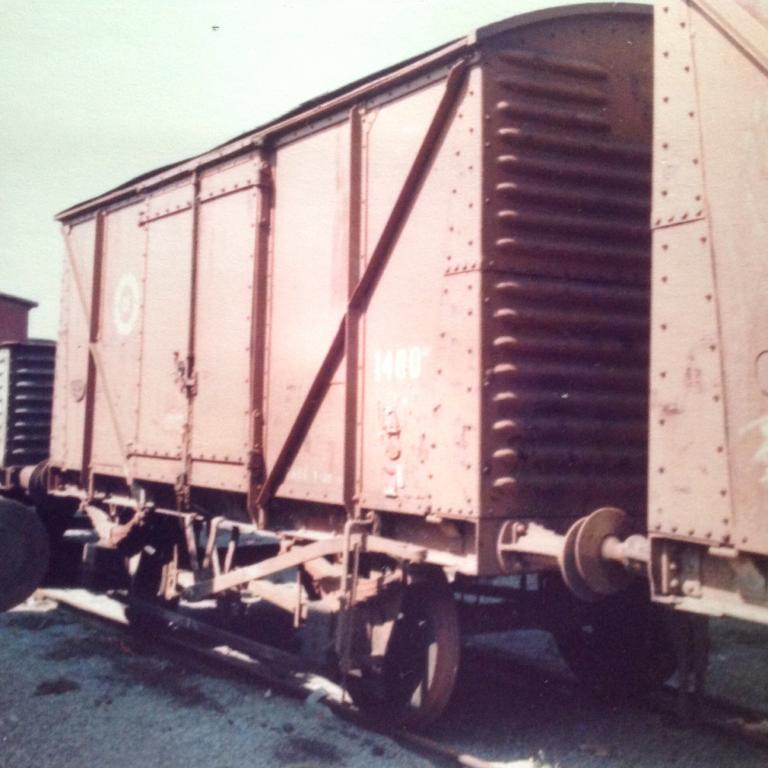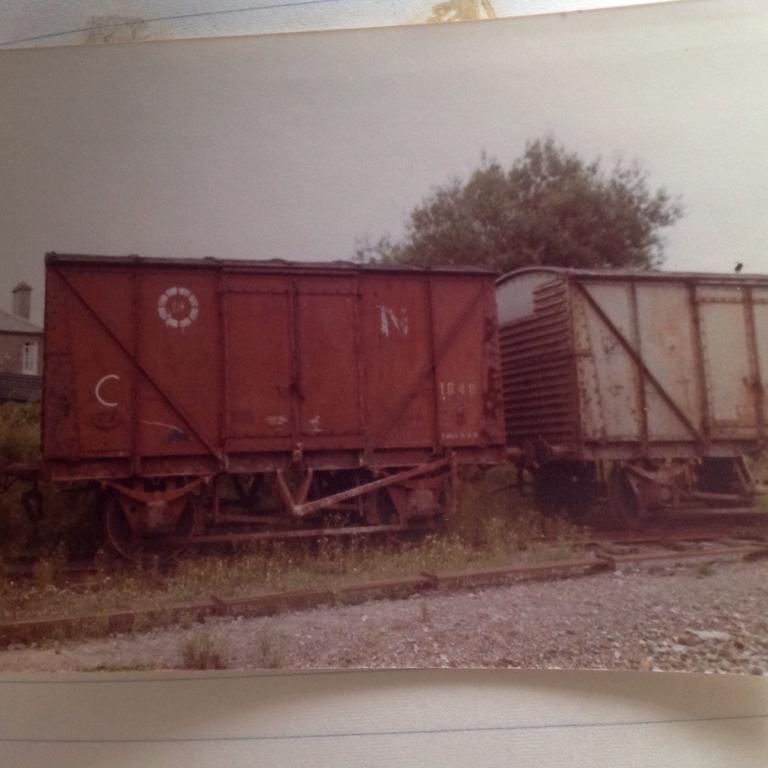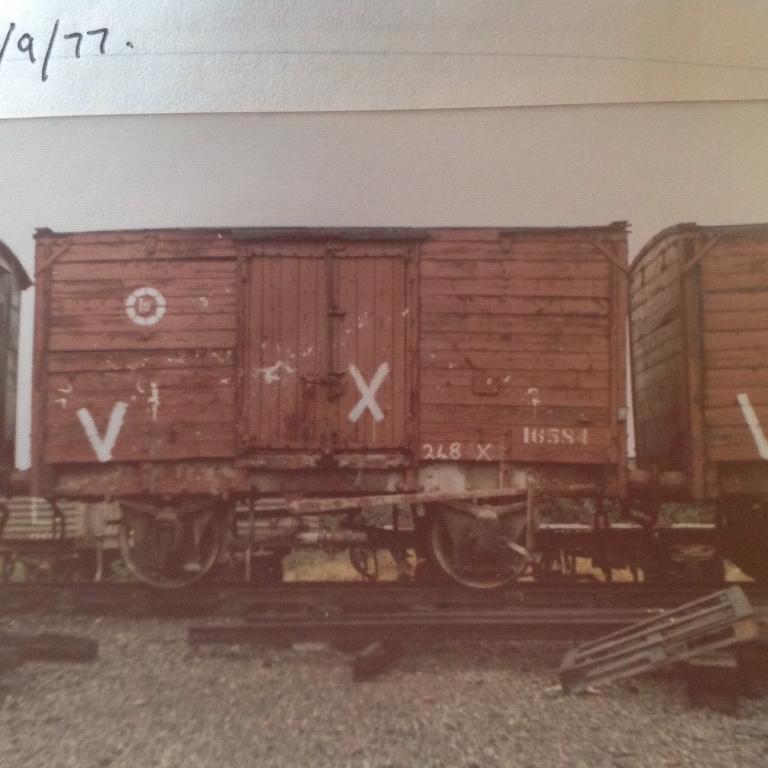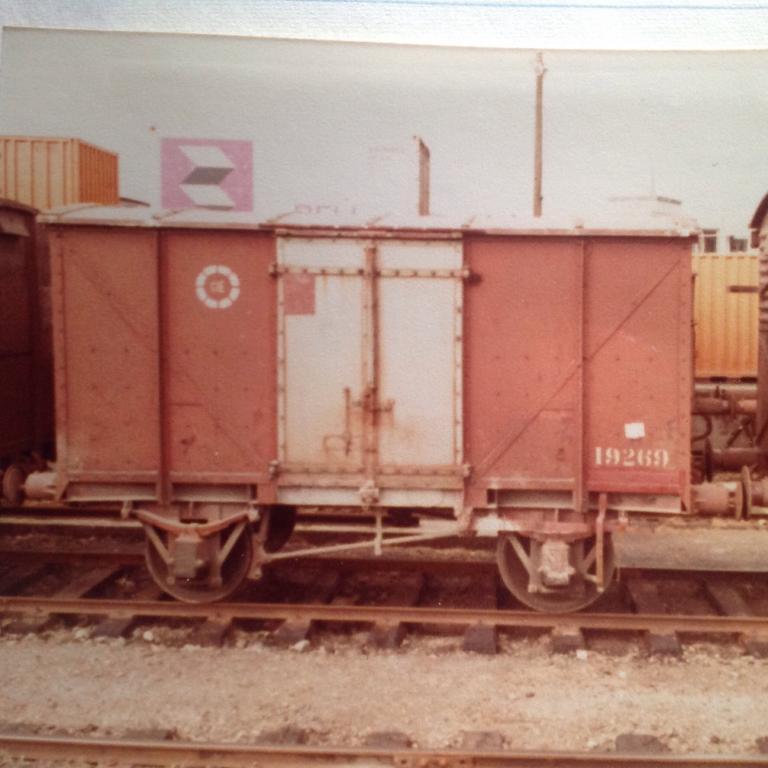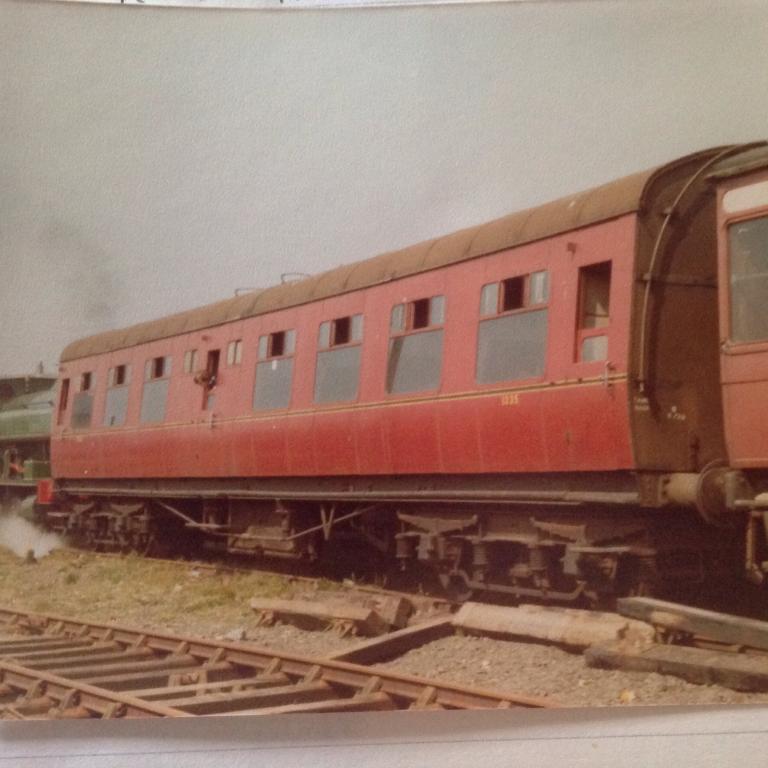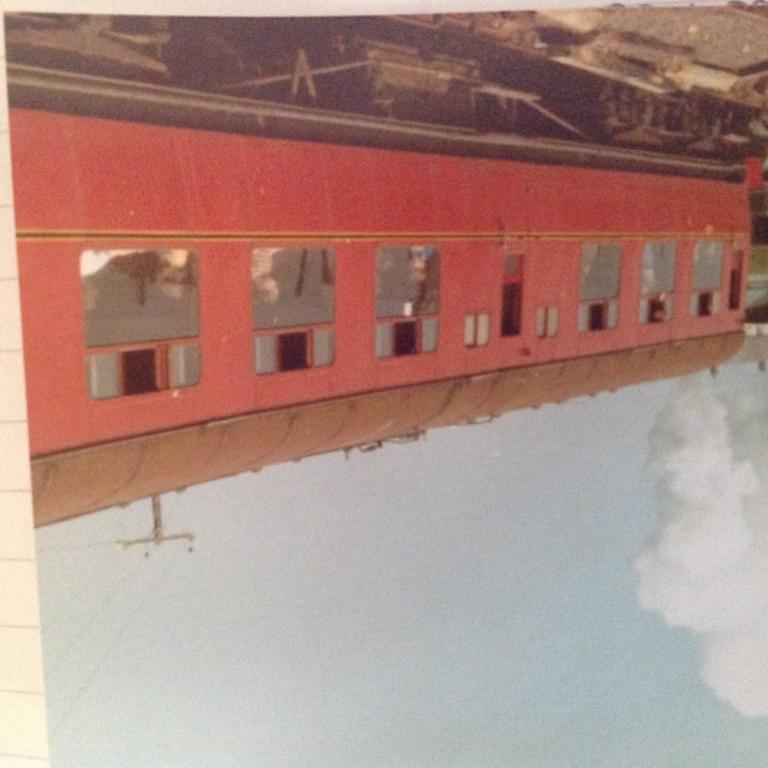-
Posts
15,690 -
Joined
-
Last visited
-
Days Won
388
Content Type
Profiles
Forums
Resource Library
Events
Gallery
Blogs
Store
Community Map
Everything posted by jhb171achill
-
I suppose it's in the eye of the beholder, Minister - I actually thought at the time that it was a refreshing change from the old green and cream, which in most stations had become quite shabby by then. But I'm the oddball here; I believe I'm the solitary person on the planet who liked the "desert sand" bus livery, even on the only one old half-cab bus that ever carried it! (For only 2 weeks till management demanded it be repainted in navy and cream!)....
-
Indeed they were! One of the three had some extra bits and pieces on the front too for a while, but I don't know why, or which (this is largely what I was referring to).
-
The extra railing, gsr800, was on one of the trio for some of the time; cryptic question - which one and when? Answers on a postcard? Disputes will be adjudicated by me grandfather. Who's got a shovel in Mount Jerome?
-
No, that'll be a 40ft trailer driver, not a van driver.....
-
GSR "Bredins" 1333 and 1335 at Whitehead
jhb171achill replied to jhb171achill's topic in Photos & Videos of the Prototype
In both those particular places, unfortunately it's absolutely not. Places are thin on the ground. -
Those Palvans look absolutely fantastic! (Don't forget to paint the chassis grey!) The Palvans had three different variations of end details and two variations of door. Earlier ones had strapping on doors, later ones plain doors. The end details are better described by photos than dscriptiins, but some were plain with strapping, others corrugated, and others again half and half. Plenty of scope for variations! Roundels tan surround / white lettering on grey vans, all-white on brown vans post 1970. The MGWR vans and horse box also look fantastic - well done.
-
GNR and GSR goods vans in 1970s CIE use.
jhb171achill replied to jhb171achill's topic in General Chat
Looks narrow gauge, but it isn't Schull & Skib. It looks like one of a number of goods vans built by the GSR for the West Clare in the late 1920s. -
I never liked the 1990s red and blue. The sight of an original DSER signal cabin painted like a garish fairground attraction was absolutely ghastly. Nor was I too keen on the cream and light grey in recent times - the old green and cream used variously by CIE, and a similar scheme used by the UTA, looked well. Just as CIE had grey shades in the 70s, so did NIR, on the few stations they bothered repainting! Though that was a much darker grey.... The MGWR had bright emerald green engines, always kept sparkly clean. Add to this brown coaches, also well kept, and stations in pillar-box red and buff, and we've a recipe for a very attractive scene!
-
Pictures taken in 1977/8 on CIE system
jhb171achill replied to jhb171achill's topic in Photos & Videos of the Prototype
Many thanks, junctionmad. We see various collections coming online in these days, and of course we can access the excellent stuff put online by the likes of the National Library, or view it (as I have done) in the archive in Temple Bar. Irishswissernie, of this website, has also posted some amazing stuff, as have people like Roger Joanes. It's good to share. All too often, stuff gets squirrelled away by someone, or worse, thrown out. I doubt there's a single photographer in the world that wants that. History is made of such stuff, and I do think it's incumbent of any of us who remember certain things to pass them on to anyone who's interested. What I've posted here is the best of what I have, I had a cheap camera for most of the interesting times, and like many a one back in the day, couldn't afford enough film to take all the pictures I'd like to have done. I'm looking at a future publication to encompass the best of what I have, like Michael McMahon (rather excellently!) did recently. It might take the form of an album including some of my father and grandfathers stuff, but I'm light years away from having time to sort and sift. Meanwhile, I'll shtick the odd thing up here. I'm glad it's of interest to people. The railways 1950-80 were possibly the most interesting period in history. For us modeller's, "the devil's in the detail". Not everyone wants accuracy, not everyone cares, and fair play to them; but for those who DO, or who want to put a lot of effort into modelling accurately, it's detail info that's needed. And for those of us with a lengthy enough list of birthdays, who were privileged enough to see it, I feel we've almost a responsibility to pass it on. Thanks for the comments, folks. -
A few Dublin Diesels in 1976
jhb171achill replied to jhb171achill's topic in Photos & Videos of the Prototype
The black'n'tan was officially displaced by "supertrain" on all main line locos, though not the "E" or "G" class, in 1972. All Mk 2 AC coaches were new in that livery. All new carriages after that were the same. All other carriages (laminates, Bredins, Cravens, Park Royals) remained black'n'tan until the end of their lives, including the then ex-AEC push-pull railcars. From about 1991, Cravens began to have an amended version of the old black'n'tan. Instead of a single white line above the windows, they had an orange line as well, and a white "tippex" line below window level. CIE Genny vans (BR type) ended their days in black'n'tan, albeit with the lower tippex line added, but NO upper orange line. The actual B'n'T livery lives on in traffic through DCDR's BR van 3189. Some Park Royals ended up with tippex lines too, but only below window - no orange line above. Just the original white band there. So B'n'T to the end basically for virtually all pre-1972 / non-air-conditioned carriages. A "point of order" here; if the modeller wants to accurately recreate anything before the early 90s, ensure your Cravens have no tippex or orange line above window level..... The "Dutch" vans - most remained B'n'T until their life's end, but a few were rebuilt with added carbuncles on the ends to run with the oul tin BR scrappers, and these were repainted in "tippex". And thus was born one of the ugliest rail-borne contraptions that the world has ever known. -
The Official Irish 'Might Have Beens' Thread
jhb171achill replied to minister_for_hardship's topic in General Chat
Brilliant, Spudfan! Liverywise, we have might-have-beens....particularly if Ireland had not been divided in 1921. 1. Home Rule is defeated and we all stay in the UK to this day: cue laminates, Donegal railcars (if they survive) and "A" class diesels all in BR blue, and both GNR blue locos, and CIE grey ones, all in lined Brunswick green or black. No CDR cherry red, nor GNR blue; these came after 1921 so wouldn't have happened. 2. All of Ireland becomes independent in 1921. GNR engines grey. Blue GNR carriages GSR maroon. The Donegal railways all in CIE green, flying snails everywhere. NCC jeeps are unlined grey. And - the Hunslets are as above. If you look at an NIR 111, or their pair of 201s when new in plain blue, I always thought the orange and black schemes looked better. Now, seeing that Hunslet, I'm convinced! -
Wow! That's amazing, Wrenneire! As warbonnet says, on to the next project... I had to get rid of my garden railway stuff a few years ago, though it wasn't anything remotely like that amount!
-
GNR and GSR goods vans in 1970s CIE use.
jhb171achill replied to jhb171achill's topic in General Chat
I was standing on my head when I took them, popeye....... -
These were indiscriminately mixed with CIE "H" vans in traffic. Vans of this type had "N" after the number, both stencilled on the side AND on the CIE cast chassis plate, e.g. 111N which is one of these. These vans dated from 1954, among the last built by the GNR(B) and just a few years older than the "H" vans. Also to be seen among them well into the seventies were the last few of the distinctive GSR inside framed goods vans, designed by jhb171senior's senior. ....and for comparison, a standard "H".
-
Well, it is a model of an iron horse....
-
GSR "Bredins" 1333 and 1335 at Whitehead
jhb171achill replied to jhb171achill's topic in Photos & Videos of the Prototype
On an earlier theme, Whitehead will be jam packed as from now; anything else RPSI has to go elsewhere. -
The seats with the signs are the very light grey, same as what looks like "white"; actually an extremely pale grey. The Hillman Hunter colour looks beige-y in the picture, but in real life might best be described as a sandy grey colour.
-
GSR "Bredins" 1333 and 1335 at Whitehead
jhb171achill replied to jhb171achill's topic in Photos & Videos of the Prototype
Yes, I remember getting a phone call from the late Sullivan Boomer - he was chairman and I was treasurer - made me sick to hear it. Six carriages (not all restored, but all very historic) reduced to ashes. If I was to print here what I would have liked to do to the perpetrators.........!!!!!!!!!!!!!!! -
A few Dublin Diesels in 1976
jhb171achill replied to jhb171achill's topic in Photos & Videos of the Prototype
Definitely orange, Dive; this was without exception always the case - the older more "tan" orange, not the brighter shade. Some models display a roundel which is a bit TOO "orange". In that pic, the loco is withdrawn and its faded. In traffic, even weathered ones never lost the "tan". 434 is full tan, but suffers from a poor photo; the other actually is too. They never used off white except on the navy and cream / red and cream town/country buses. And ONE rail vehicle: the "steam-engine-lookalike" weedspray train had a bus (off-white) roundel on the cab sides. Maybe if steam engines had survived, they'd have been black with off-White roundels! I actually meant to comment on that but forgot! -
so they're painting the Luas blue now!
-
I stand corrected!
-
GSR "Bredins" 1333 and 1335 at Whitehead
jhb171achill replied to jhb171achill's topic in Photos & Videos of the Prototype
No, it's CIE green now. -
The RPSI managed, very creditably, to get four of these from traffic with CIE in the mid 70s, when they were among the last in use. Thanks to scumbags, vandals and the associated dregs of society and walking filth who delight in wrecking things, three were destroyed by fire. (If I describe such people in detail I will be forever banned by the mods!)... One remains with the heritage set in Dublin. Among all the RPSI's carriages, it is one of the most historic, and would have worked with "Maedb". Whitehead annual Open Day, I think 1978. The carriages are painted maroon, and having been stored outside are weathered genuinely to what they might have been when awaiting repaint in GSR days. The lining is authentic for GSR, as far as it goes, but there should also be a single thin yellow line just above window level, and another just below the cantrail, as well as GSR numerals and crests. The suburban one - last survivor and now burnt...1333. When initially built, they had no gangways as they were intended for DSER suburban services. Incidentally, the last time I travelled in a "Bredin" was in summer 1976, on a train pack to the doors with teenagers going to the Kerry Gaeltacht.....! I don't remember seeing any in traffic after that, though there were possibly two still useable at Heuston...
.png.c363cdf5c3fb7955cd92a55eb6dbbae0.png)

